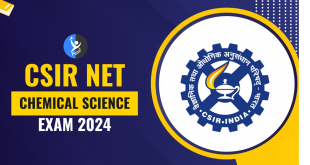A test tube is one of the most fundamental pieces of equipment used in scientific laboratories, particularly in chemistry, biology, and biochemistry experiments. It plays a crucial role in holding, mixing, heating, and testing small amounts of substances. Its simple, cylindrical shape allows for versatile usage across various scientific disciplines. Alongside the test tube, another important laboratory tool is the volumetric pipette, which is designed for accurate liquid measurement. In this blog, we will explore the uses of both tools in laboratory settings, their roles in experiments, and how they contribute to scientific research.
Understanding the Test Tube
1. Structure of a Test Tube
Test tubes are narrow, cylindrical tubes made from glass or plastic. They are typically open at one end and closed at the other, allowing for easy handling of liquids and solids. Glass test tubes, often made from borosilicate glass, are resistant to heat and chemicals, making them ideal for experiments that involve heating or exposure to reactive substances.
Test tubes come in different sizes, but the standard size is about 15–20 cm in length. Some test tubes are designed with rims at the open end to prevent spills, while others may include a stopper for sealing the contents.
2. Common Uses of a Test Tube
- Mixing and Storing Chemicals: One of the primary uses of a test tube is for mixing small amounts of chemicals or liquids. It is a convenient vessel for holding substances that require reactions to occur in a controlled environment.
- Heating Substances: Test tubes are often used to heat substances over a flame. Their cylindrical shape ensures that heat is distributed evenly. When used in conjunction with a Bunsen burner, they allow for safe and controlled heating of liquids or solids.
- Holding Samples: Test tubes are frequently used for storing biological samples, such as blood or tissue samples, which can then be used in further analysis.
- Centrifugation: In biological experiments, test tubes are used in centrifuges to separate different components of a sample based on density, such as in the separation of blood components.
- Observation of Reactions: Test tubes are often used for observing chemical reactions in small amounts. Their transparent walls allow scientists to visually monitor changes, such as color shifts, gas production, or precipitate formation.
3. Advantages of Using Test Tubes
- Versatility: Test tubes are highly versatile, used across multiple scientific fields from chemistry and biology to medical diagnostics.
- Ease of Use: Their small size and simple design make test tubes easy to handle, especially for quick and repeated tasks in a laboratory setting.
- Durability: Glass test tubes are resistant to extreme temperatures and chemicals, ensuring they can be used in a wide range of experiments.
4. Test Tubes in Specialized Applications
- Microbiology: Test tubes are essential for culturing bacteria and other microorganisms. They are often filled with growth media and sterilized before being inoculated with the microorganism of interest.
- Clinical Settings: In medical laboratories, test tubes are used to collect and store blood samples for analysis. Different colored caps on test tubes indicate various preservatives or anticoagulants that can be used for specific tests.
The Role of Volumetric Pipettes
While test tubes play a vital role in holding and testing samples, precise measurement is key to ensuring accurate experimental outcomes. This is where the volumetric pipette becomes indispensable.
1. What is a Volumetric Pipette?
A volumetric pipette is a laboratory tool used for accurately measuring and transferring a specific volume of liquid. Unlike a regular pipette, which can measure varying amounts, a volumetric pipette is calibrated to deliver one exact volume, such as 10 mL, 25 mL, or 50 mL. This precision is crucial in quantitative chemical analyses, where accurate measurements of reactants are necessary to ensure valid results.
2. Structure of a Volumetric Pipette
Volumetric pipettes have a long, narrow stem with a bulb in the middle. The bulb’s role is to hold a specific volume of liquid. The stem tapers off into a narrow tip, which allows for controlled delivery of the liquid. At the top of the pipette, there is a calibration mark that shows where the liquid should be filled to achieve the desired volume.
3. How to Use a Volumetric Pipette
- Filling the Pipette: To use a volumetric pipette, first, the liquid is drawn up into the bulb using a pipette bulb or suction device until it reaches the calibration mark.
- Transferring the Liquid: The liquid is then carefully transferred into a test tube or another container by allowing it to flow out of the pipette. Volumetric pipettes are designed to deliver the exact volume indicated, ensuring minimal error in measurement.
4. Common Applications of Volumetric Pipettes
- Titration: In chemical titrations, volumetric pipettes are essential for measuring precise amounts of a solution to ensure accurate chemical reactions. For example, during an acid-base titration, exact volumes of acid and base solutions are needed to reach the endpoint.
- Solution Preparation: Volumetric pipettes are often used to prepare solutions of known concentrations. The precision of volumetric pipettes ensures that the correct amount of solute is added to solvents, leading to reliable and reproducible results.
- Pharmaceutical Industry: In the pharmaceutical industry, where precision is paramount, volumetric pipettes are used to prepare drug solutions and other compounds with exact concentrations.
5. Advantages of Using Volumetric Pipettes
- High Precision: Volumetric pipettes are designed to deliver one specific volume with a high degree of accuracy, reducing the likelihood of errors in experiments.
- Consistency: They ensure consistent measurements across multiple trials or experiments, which is critical for scientific research.
- Versatility in Liquids: Volumetric pipettes can be used for liquids with different viscosities, as long as proper technique and equipment are used.
Comparison of Test Tube and Volumetric Pipette
Though both test tubes and volumetric pipettes are essential in the laboratory, they serve different purposes.
- Test Tubes are used primarily for holding, mixing, heating, and storing substances. They allow for qualitative observations of reactions and can handle small-scale tests, making them ideal for a wide variety of experimental setups.
- Volumetric Pipettes, on the other hand, are used for precise and accurate measurement and transfer of liquids. Their function is to ensure that exact volumes of liquids are used in experiments, which is particularly important in quantitative analyses.
Conclusion
Both test tubes and volumetric pipettes play indispensable roles in laboratory settings. While test tubes offer a flexible, versatile solution for handling substances and observing reactions, volumetric pipettes provide the precision needed for accurate liquid measurement and transfer. Together, they enable scientists to conduct experiments with accuracy and reliability, contributing significantly to advancements in scientific research. Whether you are mixing chemicals, heating samples, measuring solutions, or performing titrations, these tools are essential for achieving successful and meaningful experimental outcomes.







